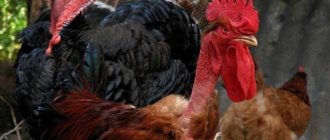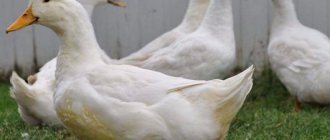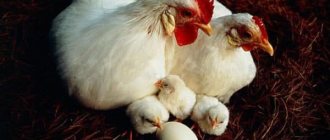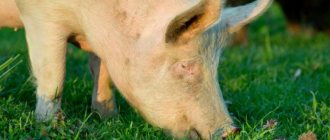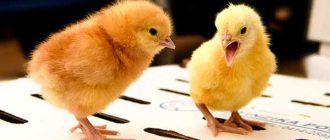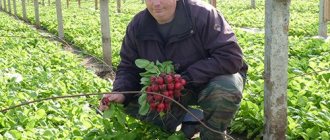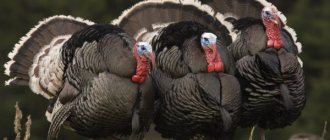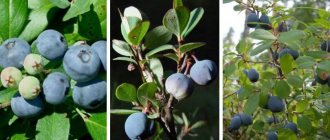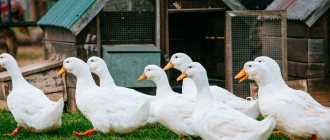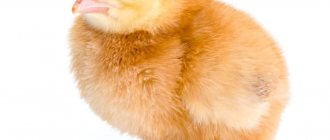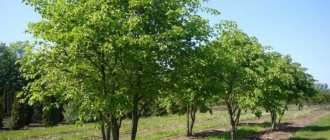Poultry is raised for food, meat and eggs. However, some species of birds attract farmers with their original appearance. They are used to decorate a personal plot. Among them, chickens with furry paws are very popular. In addition to their unusual exterior, birds have other advantages - good productivity, calm character, and the ability to adapt to different climatic conditions. Many representatives of ornamental species are able to demonstrate maternal qualities.
Characteristics of chickens with furry feet
Brahma, Chinese silk, Cochin, Sultanka, Pavlovskaya, ushanka, Siberian mossfoot, fireball - these chickens are distinguished by feathering on their legs and increased frost resistance. And some of them continue to lay eggs even in winter.
Visually attractive, shaggy birds are becoming increasingly in demand among farmers and private hobbyists. Giants and dwarfs with different colors are united by one feature - feathered legs.
Many of them are used as good brood hens for breeding other species and breeds of poultry. Others have healing meat that relieves a number of diseases. And there are such beauties that they are not inferior in beauty to a golden pheasant.
If you are interested in these representatives of the chicken world, our short review will help you make your choice.
Content and character
Siberians are active and at the same time quite calm. Roosters take good care of their family. Laying hens do not get scared over trifles; they sit calmly in their nests. The brooding instinct is well preserved.
The high fertility of eggs makes it possible to quickly increase the population. The chicks hatch together and fledge quickly. Young animals have the ability to make sounds that are not characteristic of chickens, but are more reminiscent of the trills of partridges. Cockerels are capable of trampling hens starting at four months.
The photo shows a day-old Siberian moth chick.
Both chickens and adult birds have high vitality. They do not require special housing conditions and can easily tolerate winter frosts. The summer heat also doesn’t particularly frighten them if there is somewhere to hide from the sun and there is water to drink. They forage well, supplementing their menu with insects and worms. They consume less feed compared to other breeds.
Siberians are able to overwinter in an unheated room if it is protected from the wind. This does not affect the productivity of the poultry; the chickens continue to lay eggs. The only thing is that the eggs need to be picked up as quickly as possible before they crack from frost. They can walk in the snow and even rummage in it. Instead of water in winter, they may peck snow.
In order to keep Siberian bones strong, farmers advise sprinkling sprouted grains (barley, wheat) with chalk. Then there will be no problems with ugly feet.
The Siberian Mossfoot is a breed that is worthy of restoration, because it was perfectly adapted to the harsh Russian climate.
webferma.com
Brahma chickens
Characteristics of the breed, distinctive features
In the second half of the 19th century, giant shaggy-legged chickens were brought to Europe from the United States.
The breed was developed from old Asian giant chickens. It got its name from the Brahmaputra River - Brama. The main purpose was meat production. The average weight of each bird was then 7-8 kg.
Breeders paid attention to the variety of colors, and especially to the shaggy legs of the brahma. Further selection deviated in favor of an unusual appearance, but at the expense of weight.
All brahmas are characterized by a special appearance:
- large strong bones;
- dense feather trim on legs and toes;
- full fleshy breast, high legs, long neck;
- contrastingly colored feathers, fluffy collar;
- low winding ridge;
- small wings;
- short tail.
Breed productivity indicators
Brahma chickens are raised mainly for meat. Those who have been breeding them for a long time note the good egg production in the cold season, the endurance and unpretentiousness of this bird.
Let's consider the productivity of this type of chicken.
The weight of a rooster is 4-5 kg, a chicken is 3-4.5 kg.
Sexual maturity occurs at 9 months. Egg production - 120-150 eggs per year. They bear well in autumn and winter. Egg weight is from 55 to 60 g. Excellent hens.
Popular chickens with shaggy legs of the Brahma breed grow quickly and easily tolerate heat, cold, and high humidity. They have a calm, phlegmatic temperament. Roosters are friendly and not combative. Read more about the features of care and maintenance in the article: “Breed of Brahma chickens.”
Growing and care
Reproduction of purebred chickens with shaggy legs differs little from ordinary ones: incubation, “work” of a hen, or buy ready-made chickens.
Incubation and brooding by laying hens
For incubation, eggs are collected for no more than 10 days, providing them with good ventilation and turning. Select medium-sized specimens of regular shape without spots.
They cannot be washed. Otherwise, you should maintain the temperature and humidity in the incubator at the recommended levels and turn the eggs promptly for 21 days.
Calm and “correct” hens - Siberian moths and Ushankas.
All the rest are very timid, require care and peace, and are fickle in their desire to breed. Hens that are heavy can crush eggs, which should be taken into account when breeding, for example, Cochins.
Care
Shaggy-legged chickens are vulnerable and therefore require careful handling: warmth, cleanliness, proper lighting and ventilation, and dryness.
This will require a bedding of sawdust or straw, infrared lamps to maintain the required temperature and sufficient light, etc.
The daylight hours of day-old chicks last 24 hours and are shortened every day until reaching 8 hours in 14 days.
Feeding
The food must be balanced and contain the necessary minerals, vitamins and trace elements. It is given first at intervals of 2 hours, from days 10 to 45 - at 3 hours, and then fed 4 times a day.
The first food for babies is crushed egg, nettle, boiled millet, then cottage cheese, greens with mixed feed (from 14 days of age), broth, yogurt, as well as additives from coarse sand, chalk, meat and bone and fish meal, wood ash, yeast.
Give clean water, fermented milk products with vitamins or antibiotics if necessary.
Weakened chicks can be seen by their empty crop, drowsiness, and low activity. They are separated from healthy fidgets and nursed separately, giving them special attention.
Chinese silk chicken
A combination of exotic beauty and benefits
This is probably one of the most unusual and beautiful breeds of chickens. The history of Chinese silk goes back to the time of the Tang rulers. Aristotle in the 4th century BC. e. wrote that these are “chickens with cat fur.”
In the 13th century, Marco Polo described chickens with black skin and unusual feathers. This bird appeared in Europe and Russia in the 18th century. Many people still believe that these birds have real fur, like mammals. But it is not so.
Silk chickens are used to obtain fluff: for 2 haircuts from one individual you can get from 120 to 150 g of raw material. After trimming, fluffy feathers grow again after 30-40 days.
Distinctive features of the Chinese silk breed
Chinese Silk is a shaggy chicken from head to paws. It is distinguished by maternal instinct and can willingly sit on eggs even at a young age. You will find a more detailed story in the article “About Chinese silk chickens: description of the breed,” but we will focus on the most unusual details.
The breed is decorative. The feathers of silk chickens look so light and elegant that it seems that as soon as the wind blows, these airy hairy lumps will fly up to the sky. And all thanks to the special structure of the feather.
The body is embossed. On the paws, unlike other chickens, there are 5 toes. In addition, the toes and widely spaced low paws are also densely covered with down.
The tuft of hair on the head resembles the hairstyle of a poodle, and the bushy beard and sideburns give the bird an aristocratic appearance. The color is very varied: white, gray, black, yellow, pearl. The skin of the forehead is turquoise, the beak and crest are blue. But the color of skin, meat and bones is almost always black. This is why the breed is often called "black".
Productivity indicators and character
The live weight of males is 1.5 kg, females - 1.0-1.1 kg. Egg production per year - up to 80 light brown eggs, weighing 40-41 g. Sexual maturity - from 6 months.
These chickens produce delicious and tasty fatty meat, although their black skin makes them unattractive.
It is believed that the meat and eggs of this breed have medicinal properties similar to ginseng.
It is unlikely that any other breed of the chicken order is as attached to its owner as the Chinese silkie. Just seeing a person from afar, the fluffy lumps rush towards him. They willingly allow themselves to be picked up and quietly “melt” when their owner strokes their head and back. Affectionate and gentle like cats, loyal and understanding like dogs.
Hairy chickens of foreign selection
Brahma
The breed line with shaggy legs Brahma was bred in the 19th century in America on the basis of Cochins and fighting Malay varieties. These are large meat and egg birds. The weight of adult roosters often reaches 5 kg, and hens - 3.5–4 kg. Egg production rates are average - 120 eggs per year weighing 60 g. The shell is light brown and durable.
Reference. Brahma chickens mature late. The first eggs can be obtained from laying hens by the age of eight months. This deficiency is common to all large breeds of poultry.
Exterior:
- small head with a wide frontal part;
- the comb is pod-shaped with weakly pronounced teeth, red;
- the earrings are small, oval, like the earlobes, painted red;
- orange iris;
- yellow beak;
- dense, massive body with a wide back and voluminous chest;
- the belly is large, rounded;
- the body is set high;
- the wings are long and fit tightly to the body;
- the neck is richly feathered;
- the legs are long, strong, densely feathered;
- color varieties - partridge, fawn, light, dark, Colombian.
Chinese silk
This is one of the most ancient chicken breed lines, Marco Polo wrote about it in his writings in the 13th century. Chinese chicken came to Russian territory in the 18th century. In addition to shaggy legs, the bird has other features - its meat, skin and bones are black, and its feathers are soft, resembling rabbit fur to the touch.
Exterior of the Chinese silky chicken:
- weight of a rooster – 1.5 kg, chicken – 1 kg;
- small knocked down torso;
- neat head with a compact dark beak and pink crest;
- the feathers of the crest are directed back;
- earlobes are rounded, bluish-ashy in color;
- purple earrings;
- the neck is thin, short;
- the back is wide, rising steeply at the sacrum;
- the tail is lush and short, it is almost hidden under the long feathers of the back;
- limbs are short, richly feathered.
Attention! Chinese silky chicken meat contains more vitamins and amino acids than products obtained from other breeds. Based on it, scientists create medicines. The feather cover of representatives of this breed is also highly valued. It is sheared and then used in the same way as animal down.
Black meat is considered a delicacy. It has healing properties and a pleasant taste. The silken hen produces 90–100 eggs per year, each of which weighs 35 g. According to reviews, bushy-legged birds of Chinese origin have a peaceful character. They love to be held and petted.
Cochin
Long-legged Cochin chickens for meat production have a luxurious appearance. According to one version, they were bred in Vietnam, according to another - in China. There is no reliable information about the origin of the breed; it is only known that the dwarf variety of Kochs was used to decorate the court of the Chinese emperor. In the 19th century, Europeans first became acquainted with these birds. Cochins immediately won many fans due to their unique appearance and high meat productivity.
Reference. Today, bushy-footed kochs are often used to create new varieties of birds.
Exterior characteristics:
- disproportionately small head with a red crest;
- the neck is of medium length with rich plumage, making it appear short and thick;
- the body is quite massive with a well-muscled chest and a wide back;
- belly is large and round;
- wings are short;
- the legs and thighs are fleshy, the limbs are completely covered with dense plumage;
- Common colors are blue, white, black, fawn.
Cochins are large birds. A one-year-old rooster weighs 4.5 kg, and a chicken weighs 3.5–3.9 kg. By four months, the young animals gain a weight of 2.5 kg. The breed is prone to obesity, so it is important to properly prepare the birds’ diet and not deprive them of the opportunity to walk. The egg production of the Cochin moths remains at the level of 100–120 eggs per year. The shell is brown in color and the egg weighs 55–60 g.
Cochin chickens are unpretentious, friendly, picky eaters and are not afraid of the cold. These are their main advantages, in addition to high meat productivity. Farmers consider the disadvantages to be late ripening and mediocre egg production, as well as slow growth rates.
Sultana
The hairy breed of Sultan chickens comes from Turkey. Once upon a time she decorated the gardens of the Turkish khans. Scientists are inclined to believe that the ancestor of this species is the Pavlovsk chicken. The first mentions of it are found in documents dating back to 1600.
Characteristic external features of the sultana:
- white plumage (roosters may have yellowish feathers in the belly area);
- a small head on which a truly huge lush crest flaunts;
- the sultan has sideburns and a goatee;
- a bright red comb is barely visible from the thickets of the crest; its shape resembles horns;
- earlobes and earrings are small;
- the beak is strong, short, and large nasal openings are clearly visible on it;
- the body is short and wide;
- the chest protrudes forward;
- neck of medium length with a slight bend, densely covered with mane;
- the wings are pressed tightly against the body and directed straight down;
- the limbs of the plumes are of medium length, the legs and metatarsals are covered with luxurious plumage;
- five-toed feet blue;
- the tail is bushy and directed upward at an acute angle in relation to the line of the back.
The productive performance of the breed is mediocre. The live weight of a rooster at the age of one year barely reaches 2.7 kg, and the weight of a laying hen is 2 kg. A chicken lays eggs from the age of five months. In a year it is possible to collect 80–100 eggs with white shells. The fertility rate of this breed is 90%. Laying hens have a developed brooding instinct, so there are no problems with producing offspring. One of the advantages of the hairy Sultan breed is its calm character.
Faverolles
The shaggy-legged Faverolles chicken breed comes from France. It was bred in the 18th century on the basis of Cochins, Brahms, Gudans and Silver Dorkings. Initially, this variety was created as a meat variety, and delicious broths were prepared from it. Later, the chicken was improved and acquired other valuable qualities - satisfactory egg production and early maturity. With all its advantages, the fireroll has an interesting appearance, thanks to which it is often seen at exhibitions.
Birds exterior:
- on the small flat head there is a simple erect leaf-shaped crest;
- the dense, fleshy neck is densely covered with a luxurious mane;
- the body is made in the shape of a trapezoid and placed horizontally;
- massive, well-muscled chest, rounded belly;
- long and dense back with a wide loin;
- the lower legs are covered with thick feathers, the metatarsals are short and feathered;
- paws have 5 toes;
- the tail is raised up, the rooster has long curved braids;
- Common colors are Colombian, blue, salmon.
Fireball chickens are prized for their excellent gamey-like meat taste and rapid weight gain. Chickens of this breed are ready for slaughter at 4–4.5 months. The weight of an adult rooster varies between 3.5–4 kg, and that of a hen – 2.8–3.5 kg. The egg production of laying hens in the first year of laying is 160–180 eggs, the next year it decreases to 130 eggs. Product unit weight: 55–60 g.
Rough-legged faverole hens are peace-loving and phlegmatic birds. They have a good appetite, which is why the birds get fat. A significant drawback of this variety is that laying hens do not sit down to hatch chicks. To produce offspring you will need an incubator.
There are quite a few varieties of chickens with shaggy legs. Each of them is unique in its own way. Some captivate with their appearance, while others, along with their beauty, captivate their owners with their high productivity. I am glad that among the woolly-legged breeds known throughout the world, there are creations of Russian scientists, such as the Siberian woolly legged chicken, earflaps and Pavlovsk chicken.
Cochin breed
History and appearance
The Cochins date their existence back to the mid-nineteenth century. First bred in China to satisfy increasing food needs and to obtain feathers for filling pillows. The breed was popularized in Europe by the British Queen Victoria.
The appearance of the giants is amazing. In addition to its tall stature, increased plumage gives the bird greatness. The shaggy legs are especially beautiful. Several layers of feathers completely hide the lower leg and toes.
The phlegmatic temperament of the Cochin gives the impression that the bird is clumsy and lazy, but this does not deprive it of its charm. Read “Description of the Cochin chicken breed” and learn even more interesting things about it.
Advantages and disadvantages of the Cochin breed
The gentle disposition and sedentary lifestyle, the lush plumage of the giants' shaggy legs played a cruel joke on them. Birds have digestive and heart problems, which are partly a result of their slow-moving nature. Special attention is required to the quality of feed and disease prevention.
One of the heaviest breeds. Roosters can weigh up to 5.4 kg, hens - 4 kg. These chickens don't fly, so they don't need to have their wings clipped. Fences 60 cm high are already insurmountable for them. They grow slowly, taking 2 years to reach full maturity. They live long, up to 10 years.
Let us describe the advantages of the breed.
Good maternal instinct.
Large eggs, on average 55 g. Egg production - 100 eggs per year. They carry well in the cold season.
Although the weight of the carcass is large, the bird grows very slowly.
Cochin roosters are friendly and not pugnacious.
Advantages and disadvantages
The advantages and disadvantages of hairy chickens depend on the breed. The universal advantages include the following:
- attractive appearance;
- resistance to frost;
- unpretentiousness to living conditions;
- beneficial properties of eggs and meat.
At the same time, decorative birds also have some disadvantages. These include the following:
- not very good productivity;
- high cost of hatching eggs and birds.
Eastern beauty Sultana - breed overview
A very rare and ancient decorative breed. The first mentions date back to 1600, descriptions are found in the works of Carl Linnaeus. In 1854, the Sultanka bird was first brought to England from Turkey. Before this, representatives of the breed were kept only as decorations for the gardens of eastern rulers and nobility.
Let's look at the distinctive features of the sultana. The round head is covered with a spherical tuft of feathers, like the headdress of a sultan. The five-toed feet are dressed in fluffy “harem pants”. The physique is strong. The wings are long.
The breed standard is white, but gray and black colors are also found.
Energetic, inquisitive, but friendly. The bird quickly gets used to its owner. He eats little, so the food must be complete.
Egg production up to 80 eggs per year. Hens are good hens; you can “attract” them to incubate the eggs of other breeds. The weight of an adult sultana ranges from 1500 to 2000 g, the meat is tasty and healthy.
Peculiarities
Many poultry farmers keep unpretentious crested chickens on their farm. These birds belong to the egg-meat category, which makes them more valuable. These individuals are small in size. Their main distinguishing feature is the presence of a crest on the head, the feathers of which are strictly directed back. In this case, feathers often stick out or create a kind of disorder on the bird’s head. The shape is close to sheaf-shaped or helmet-shaped.
The comb of this common breed is usually red in color and has a characteristic leaf-like shape. There are also individual individuals that have a crest of a regular rose-like structure, devoid of any additional processes. The head itself of these birds is small and slightly elongated, proportional to the body. The earrings and front part of this bird are also red. There may be small white spots - this is allowed by the standards of this breed of birds.
As for the color of the beak and eyes, it directly depends on the plumage of the chickens. Most often you can meet individuals with bright orange eyes, a little less often – light yellow, brown or red. The color of the beak can vary from yellowish to dark ash. It is always strong and slightly curved. The feathers fit tightly to the bird's body and always point backwards.
The neck of crested chickens is in most cases short, and the back is wide and fairly flat. These representatives of the breed have a well-developed tail. The breast is also wide and strong. The wings are usually lowered downwards, but at the same time they always grow powerful and quite dense. The legs of this bird are short and have no feathering on their surface.
Pavlovsk chickens - national pride
This is interesting
Pavlovsk chickens are the oldest Russian breed. The name comes from the village of Pavlovo, Nizhny Novgorod region, where these chickens were originally bred. Despite the fact that the first official description dates back to the end of the 19th century, the breed appeared in Russia many centuries ago.
There is a version according to which Persian chickens, which could have been brought to Russia by Greek traders, took part in the selection of the ancestors of the Pavlovsk breed.
Revolutions and wars led to the fact that the breed was almost completely lost, but already in the 80s of the twentieth century its revival began.
Did you know that at an auction in Italy in 1988, a pair of Pavlovsk shirts was auctioned for $2.5 million?
Exterior features and productivity of Pavlovian chickens
Now Pavlovsk shaggy-legged chickens are represented by two varieties: golden and silver.
Description and productivity indicators of the breed:
- silver color is black and white, iridescent, the crest is flattened on the sides;
- the golden color is black and yellow, it burns in the sun like a firebird, the crest is a lush turban;
- the legs are strong, shaggy, even the toes are feathered;
- lush beard and sideburns;
- luxurious collar;
- the wings are large and sweeping;
- luxurious tails of roosters;
- the body body is wide, compact;
- cockerel weight 2.3 kg, chicken – 1.7 kg;
- egg production is high - from 160 to 300 eggs per year, depending on the conditions;
- egg weight 50 g.
Pavlovsk chickens are hardy and not afraid of the cold. Chicks fledge quickly. Sexual maturity is reached by one and a half years.
Temperamental pavlovkas require a special approach
Pavlovkas are fidgety: grumpy, fearful, fussy. They constantly scurry around in search of food. Roosters are cocky and pugnacious, they conflict at the slightest provocation and for no reason. They do not get along with chickens of other breeds, but they get along well with turkeys, geese and ducks.
They fly excellently and at every opportunity they do not miss the opportunity to escape from the enclosure.
The main purpose of breeding is to preserve the original Russian decorative breed, as well as to obtain eggs and meat.
Chickens with shaggy legs of domestic selection
Pavlova chicken
There is no reliable information about the origin of Pavlovsk chicken. It is known that it was bred in the village of Pavlovo, Nizhny Novgorod province, around the 18th century. In the 19th century, the breed was on the verge of extinction. Modern breeders have made a lot of efforts to preserve the breed line.
Reference. Scientists suggest that all modern crested chickens are descended from the Pavlovian variety.
Representatives of this breed line have an attractive appearance. These are small birds with a graceful posture and beautiful plumage. Let's look at the exterior characteristics of the Pavlovsk ruffed chicken:
- The weight of a rooster reaches 1.8 kg, of a laying hen – 1.2–1.4 kg;
- knocked down body with a wide torso horizontally positioned;
- the back is wide at the base of the neck and narrows towards the tail;
- the chest is convex and round in shape;
- the neck is short, densely feathered;
- a medium-sized rounded head with a lush helmet-shaped crest;
- the crest is poorly developed and located directly above the base of the beak;
- large dark eyes;
- the lobes are small, they are completely hidden under the lush sideburns;
- the large tail is set high, the rooster's braids are long and curved;
- limbs are short;
- the metatarsals are covered with feathers, the ends of which are bent inward, forming the so-called hawk's tuft;
- there are 4 toes on the paws, they are also feathered;
- The color of Pavlovian chickens is golden-spotted or silver-spotted.
The Pavlovskaya breed of chickens with shaggy paws is distinguished by its early maturity. Her productivity is low. Laying hens produce about 80 eggs per year with an average weight of 45–50 g. One of the advantages of this variety is its developed brooding instinct.
Ushanka shaggy-legged
This variety was bred by Russian scientists on the basis of Pavlovsk and Orlov chicken. Farmers value the shaggy-legged earflaps not only for its original appearance. According to reviews, this is a calm and peaceful bird of universal use. She produces about 160 eggs per year and tasty, nutritious meat.
Exterior Features:
- the weight of a rooster that has reached one year of age is 2.8–3 kg, smaller laying hens – 2.3–2.5 kg;
- a medium-sized head with a large red crest, which usually falls to one side;
- there is a neat beard under the beak;
- brown-orange eyes;
- the neck is long with a beautiful curve, well feathered;
- massive body, wide back;
- the tail is long, raised high with long braids;
- limbs completely covered with thick plumage;
- The color is predominantly fiery red or brown, the tail is black with a green tint.
Long-legged ear-flap chickens are unpretentious and well adapted to the local climate, for which they have gained the favor of farmers. They have a calm temperament and strong immunity.
Siberian honeymoon
This is a native Russian ancient breed of chickens with shaggy legs. For 100 years it was considered extinct, but during an expedition to the village of Pavlovo, which was organized in 2009, scientists accidentally discovered two laying hens of this species there. To recreate the line, it was necessary to organize the delivery of a Pavlovian rooster from another region and urgently begin breeding work.
Characteristic features of the breed:
- large head, decorated with a lush crest;
- the comb is small, rose-shaped;
- The rooster has small red earrings, while the chickens have no earrings;
- presence of sideburns and goatee;
- the beak is short, but massive, its color depends on the feather color;
- the neck is massive, densely feathered;
- the body is compact with a wide back and a round, convex chest;
- the tail is wide, fan-shaped, raised high;
- limbs are short, completely covered with thick feathers;
- color black, white or black-pearl.
The Siberian bushy hen belongs to the egg breeding category in terms of productivity. The weight of an adult rooster rarely exceeds 2.7 kg, and that of laying hens is even less - 1.8 kg. Egg production is above average - 160–180 eggs annually. The productive period lasts up to 3 years. The shell color is white, the strength is good. The weight of one egg varies between 55–60 g.
Attention! The Siberian moth is not afraid of cold weather - this is one of its advantages. Other advantages of the bird are a developed brooding instinct, friendly character, unpretentiousness, and high egg productivity.
Ushanka - a shaggy-legged breed of universal use
Another striking representative of chickens with feathers on their legs. The history of origin is unknown, but there is a version that this breed has Pavlovian and Oryol ancestors. To confirm this, there are “Pavlovian pants” on his legs and a beard, like Orlov’s. More information in the article: “The shaggy-legged earflaps chicken breed.”
The appearance of earflaps is characterized by typical features. Brown-fiery color, with black splashes. A recumbent large crest and a large beard on a relatively small head. Long neck, massive body. Abundantly feathered powerful legs, which is why the paws are not visible, a beautiful large tail with black and green feathers.
An egg-meat breed. The weight of roosters is up to 3.5 kg, females – up to 2 kg. Egg productivity from laying hens is up to 200 eggs per year. Puberty occurs at 6 months.
The shaggy-legged earflaps have a kind and easy-going disposition. Quickly gets used to the owner.
Appearance
The first thing that catches your eye in the appearance of Siberian moths is the crest on the head and heavily feathered legs. These signs were formed as protection from frost. The crest of Siberians is small, which allows it to be completely hidden under the crest. The thick feathering on the legs reaches to the nails, the metatarsus are short.
The second feature is the presence of a thick and long beard in both roosters and chickens. And most of the red face is covered with sideburns, under which small white lobes are almost hidden.
Siberians have a large head. The beak is short but thick. The eyes are red, the face is also red. Earrings are developed only in roosters; in them they reach up to 3 cm, and in hens they are not even noticeable. The short neck is covered with a thick mane. The back and chest are wide. The tail is powerful, with abundant tail feathers and long curled braids. The tibiae are not long, heavily feathered, with a hard “hawk-like tuft.” The plumage on the metatarsus is dense, short, and close-fitting. Four toes should be completely covered with feathers.
The predominant plumage color was black; white and cuckoo plumage were also found.
The Siberian mothfoot breed being restored has some characteristics that do not correspond to the 1905 standard. For example, today's birds have a predominant horn-shaped crest instead of a rose-shaped one. Most of the legs are feathered like a spruce paw, and many have 1-2 white feathers on the metatarsus. And five toes are common.
Siberians were considered large chickens, but now they are mostly small birds. Therefore, breeders still have a lot of work to do before the breed can be officially declared restored.
Quite a breed profile (photo from A. Korolev’s farm).
Siberian mothweed - cold resistance combined with high productivity
The name of this breed is tied to the place of origin. Black, bushy-legged chickens with original tufts on their heads tolerate cold well. The appearance is distinguished by its attractive decorativeness:
- the head is round, small, with a lush crest-cap;
- The feather color is black, less often gray with dark green splashes;
- beak large, powerful;
- the neck is long;
- the feathers are short, dense, long on the tail;
- the legs are strong, high, covered with feathers, there are few feathers on the paws;
- the body is large and strong;
Sexual maturity is reached at 6 months. The weight of cockerels is up to 3.5 kg, hens – up to 2.5 kg. Egg production – up to 200 eggs per year. Their temperament is balanced, but the cockerels carefully guard their flock.
A distinctive feature of such chickens
Already from the name you can guess how bushy-legged chickens differ from others.
Their peculiarity is the presence of fluffy pants on their paws. In most varieties of birds, the metatarsals are bare, but in the furry ones they are abundantly covered with feathers, which gives them a funny appearance.
Among the bushy-legged chickens there are birds of standard size and miniature representatives.
They have different origins - Chinese, Turkish, French. Russian poultry farmers are more interested in Russian breed lines, as they are well adapted to the local climate.
Faverolles chickens - a brief overview of the breed
The breed is of French origin. The plumage color is light. Slightly darker-colored cockerels and light-colored hens with abundantly pubescent legs will decorate any farmstead. The main focus of the breed is growing to produce high quality meat.
In the article “Description of the fireball chicken breed” you will find a lot of useful information, but we will focus on the advantages of fireballs over other representatives of shaggy-legged chickens.
Indiscriminate in food, unpretentious in maintenance.
The decorative appearance of the breed is combined with high productivity.
The carcass has a good presentation and a compact round shape. The meat has excellent taste. Early maturity - 6 months.
Stable egg production up to 180 eggs per year and large eggs.
By nature, fireballs are not very friendly, although outwardly they are quite calm. They are reluctant to accept new cohabitants into the herd. Hens rarely sit on eggs, but they lay consistently.
Story
Today there are more than 800 breeds of chickens, which belong to different areas of productivity. Some birds produce a lot of eggs, while others actively increase their mass. Decorative breeds are also very popular. Such birds are also considered productive, but in terms of weight gain and egg production they are inferior to other breeds.
Downy chickens with shaggy legs can hardly be called rare. The first attempts by scientists to breed birds were recorded in the nineteenth century. Today, farmers breed a total of more than 100 original breeds of chickens. A third of them have furry paws. At the same time, it is worth choosing a breed taking into account the climate.
